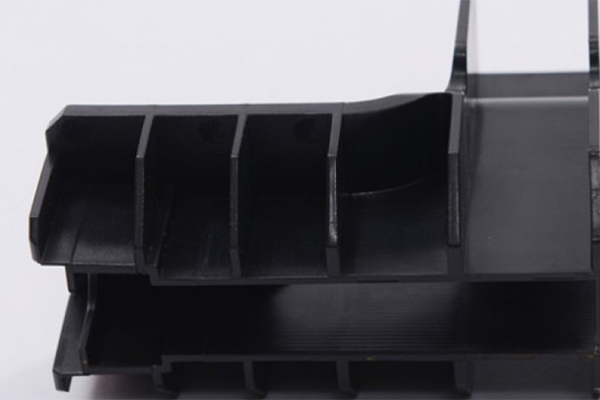What Causes Short Shots in Injection Molding?
Short shots are a common problem in the injection molding process, usually due to the molten plastic material not filling the entire cavity. This phenomenon can result in incomplete or voided molded parts, affecting the quality and performance of the final product. The problem of short shots can be solved by improving the mold design, optimizing the injection parameters and selecting the appropriate materials.
In the early stage of product production, DFM principles and methods are used to discover and solve potential problems during the design stage, such as short shots, sink marks, and weld lines. In this article, we will give you a detailed introduction to how to solve short shots in the plastic injection molding process and how to prevent them. If you want to know more about how to deal with sink marks and weld lines, you can check out our related articles.

Causes and Solutions for Short Shots in Injection Molding
Short shots in plastic injection molding can arise from various factors, and the appropriate remedy depends on the specific cause. Here are some of the most common causes and corresponding solutions for short shots:
Material Viscosity Issues
-
- Short shots can occur when the plastic material’s viscosity is not suitable for the mold design. Viscosity measures the plastic’s resistance to flow when melted. Low-viscosity materials flow quickly and can fill the mold cavities effectively, while high-viscosity materials may flow too slowly to achieve complete mold filling.
- Raw resin materials are rated for viscosity, with styrene typically considered a baseline with a viscosity rating of 0. Some materials, like nylon, have negative ratings indicating low viscosity, while others have positive ratings reflecting higher viscosity.
Sungplastic’s team of engineers will evaluate during the design stage whether the viscosity of the selected material is suitable for your project and if not, we will provide potential solutions to solve the short shot problem. This process may involve selecting different materials or adjusting processing parameters to optimize the process. Ensure consistent production of high-quality plastic parts that meet your expectations for the final product.
Inadequate Mold Venting
-
- A well-designed mold should maintain an almost airtight seal to prevent flash in the injection molding process. However, insufficient or incorrect venting can lead to issues such as short shots. Short shots can occur when the mold lacks proper venting, as the air within the mold cavity has no escape route while the plastic resin is injected. This trapped air impedes the flow of the plastic material.
- The inclusion of vents within the mold is crucial to facilitate proper filling. These vents should be deep enough to allow trapped air and gases to escape but not so deep as to permit plastic flash formation. Various venting techniques, such as standard, ejector, peripheral, or runner venting, can be employed as needed.
To address short shots resulting from improper or insufficient venting, we may introduce additional venting in the specific mold area experiencing short shot problems. This helps ensure that air can escape during the injection process, promoting complete mold filling and preventing short shots.
Insufficient Mold Temperature
If the plastic material struggles to flow into the mold cavity, it may be due to inadequate mold temperature. At the existing temperature, the material lacks the necessary flowability to reach all sections of the cavity effectively. To resolve this issue, we will increase the mold temperature, enabling the plastic to flow into even the most challenging areas of the mold.
Blocked Flow Channels
In some cases, material flow can become constrained due to blocked flow channels within a hot runner system. To ensure proper flow and complete mold cavity filling, it may be necessary to clear these channels. Similarly, cold runner systems can encounter flow limitations caused by undersized runners in the molds or simulations. To rectify short shots resulting from this issue, it may be necessary to enlarge these smaller runners to allow for improved material flow.
Fill Rate Issues
Short shots can sometimes be attributed to suboptimal fill rates during the injection process. In such cases, we need to enhance the injection pressure and/or injection speed to ensure complete mold filling.
Avoid Short Shots with DFM (Design for Manufacturability)
As with all manufacturing processes, plastic injection molded parts are subject to many problems and defects that require troubleshooting during production. The most common quality problems include short shots, sink marks, weld lines, etc. In order to avoid the occurrence of these problems, we can use the Design for Manufacturability (DFM)system method to solve these potential quality problems at the mold design stage, thereby improving product quality, reducing manufacturing costs and improving the efficiency of the production process.
Sungplastic is an experienced injection molding manufacturer. During our many years of production, we have faced many challenges, such as short shots, sink marks, weld lines and other problems or defects. Every time we encounter problems, we make it our mission to solve them and constantly improve and perfect our injection molding process. Our experience not only allows us to promptly identify and resolve potential issues, it also makes us better able to meet our clients’ specific needs and provide highly customized solutions. No matter which process your project requires, we can provide you with exceptional injection molding manufacturing services.
Get a free quote and design analysis today.
We’ll reply to you within 6 working hours.
We respect your privacy.
+86 139 2927 4777 (WhatsApp, Wechat)
